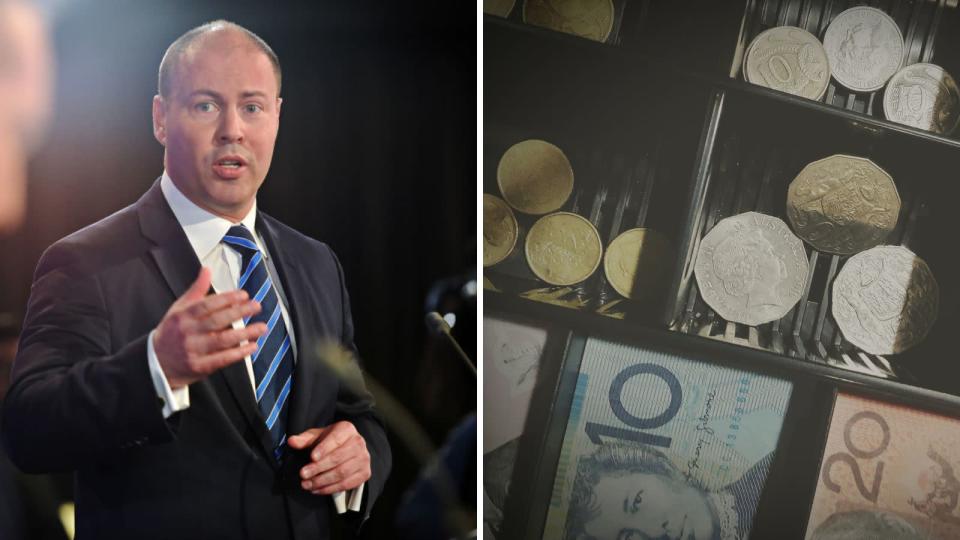Watch out: The Aussie economy is still 'in the red'

Since Treasurer Josh Frydenberg delivered the Coalition’s pre-election budget on 2 April, just five weeks ago where he claimed the budget was “back in the black”, the government has borrowed an extra $5.85 billion in gross terms.
It is scheduled to borrow a further $900 million this Wednesday which will bring the tally of new borrowing to $6.75 billion in five weeks.
This means that government debt has risen to $535.8 billion, according to the Australian Office of Financial Management, and Frydenberg’s budget papers show that gross debt is on track to rise further, to $569 billion in 2022-23, based on current policy settings and assuming the economy miraculously pick up steam over the next few years to deliver a surge in tax revenue.
Related article: Here's what could decide Australia's vote
Related article: After data scandals, Australia faces an election under heavy profiling
Related article: How we were ROBBED of an economic boom
The fact the government is continuing to borrow money at a rapid pace is in part because the budget is still in deficit and not “back in the black” as Prime Minister Scott Morrison claims, and in part because it needs to raise cash to fund bond maturities from earlier borrowings and so-called bond buy backs from the financial markets.
With the economy stalling, inflation surprising low and the risks to the economy tilting lower, the surplus projection for 2019-20 is looking shaky.
Very shaky.
To be sure, iron ore and some other commodity prices are strong.
These commodity prices at remarkably elevated levels are the only reason there has been an upgrade to the outlook for the budget balance over the last two years.
Without this good fortune, the annual budget balance would be well over $5 billion worse off and the wafer-thin surplus projected for 2019-20 would be a deficit.
And if, or perhaps rather when, the iron ore price tips sharply lower, as is always a risk in the extreme volatility in the commodity price market, the budget surplus will almost certainly disappear.
In the mean time, the Morrison government is borrowing money – usually between $1 billion and $2 billion every week.
Week in and week out except for the period around Easter and Christmas and New Year when even the debt management people took a break.
If the continued borrowing and trend rise in government debt was observed and understood in the heat of the current electoneering, there would be serious questions and analysis each time the Prime Minister or Treasurer rattled off the “back in the black” mantra that it clearly sees as a vote winner.
To be fair, if the budget was actually back in the black, if the government had delivered a surplus or two, there would be political capital to be made for those in the electorate that want to see a capping and then reduction in the level of government debt.
Alas, it hasn’t.
When the election comes and goes in a couple of weeks, either Josh Frydenberg as existing Treasurer or Chris Bowen as Labor’s Treasurer elect, will need to do an economic audit of the economy and the budget numbers.
There needs to be a realisation that the budget, along with the economy, is still fragile and vulnerable to a series of negative shocks which would quickly escalate government debt from an already elevated position.
There is something unsettling seeing the government crowing about an achievement it has not yet delivered and may never deliver.
That said, there is a sense of déjà vu with the experience in 2012 when Opposition Treasury spokesperson Joe Hockey promised to deliver budget surpluses ‘each and every year’ if elected. Of course, this never happened and more than six years on there is still a debate on the progress of lack thereof of moving to surplus and lowering government debt.
For the Treasurer in the new government after 18 May, a tough work schedule awaits and hopefully true budget repair is seen rather than the pretend quick fix which the Coalition has spoken about for the last few years.
Make your money work with Yahoo Finance’s daily newsletter. Sign up here and stay on top of the latest money, news and tech news.

 Yahoo Finance
Yahoo Finance 